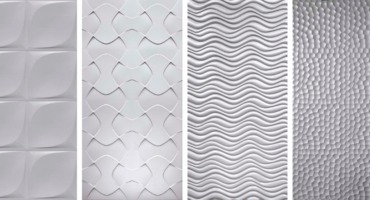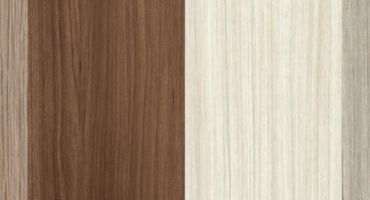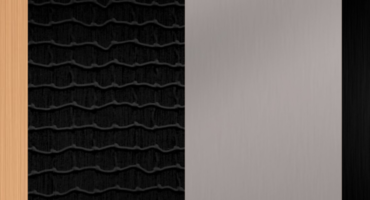The Easiest Alternative to Installing Subway Tile in the Bathroom
Whether you’re an experienced DIY-er or a newly minted weekend warrior, you may be wondering if there is an easier way to achieve the look of classic subway tile in your tub and shower. After all, tile is notoriously difficult to install. Homeowners now have more options than ever to get the look they want, and MirroFlex Tub and Shower Surrounds are the easiest way to get the subway tile look with less work for less money.
Unlike traditional tile installation, remodeling with MirroFlex is a project that is appropriate for both beginners and pros alike. Don’t believe us? We’ve broken down the process for remodeling with both subway tile and MirroFlex Tub and Shower Surrounds so you can decide for yourself. Take a look below and see the difference.

How to Install Subway Tile in Your Bathroom Shower
Skill Level: Master
Materials Needed:
- Thin-set Mortar
- Screws
- Subway Tile
- Sanded Grout
- Unsanded Grout
- Fixtures
- Electric Screwdriver
- Spacers
- Pencil
- Sanding Block
- Rubber Grout Float
- Mask
- Notched Trowel
- Buckets
- Level
- Broom
- Tile Nippers
- Sponge
- Safety Glasses
- Tape Measure
- Wet Saw
- Take measurements of your space to see how many subway tiles you’ll need. The number of tiles you buy will be dependent on the size of your shower and the size of the tile. Make sure to measure from the top and bottom of the shower wall check that your wall is straight. Otherwise, you may have to take extra steps to compensate for any sagging/bowing in your wall.
- Lay out all of your subway tiles before mounting to the wall. This will give you an idea of how your pattern will look, see how many tiles will fit on your wall, and where you need to make cuts. Make sure you space out the tiles exactly how you want them on your wall or you won’t get an accurate measurement. After dry-laying the tile, determine the best place to start setting the tiles, working from the bottom-up.
- There’s one more important step before you start setting tiles on your wall. Use a starter board as a straight edge to line up your tile. Screw the starter board into the cement backer board, making sure it’s completely level before drilling into the wall. If you don’t use a level straight-edge, you won’t have straight and level tiles. Simple pencil lines aren’t going to cut it here, as the first row of tiles can easily slide past that border. (Besides, pencil would most likely get covered up by the thinset mortar in the next step.) You can remove the starter board once you have the first series of subway tiles down.
- After all of that prep, you’re finally ready to start setting tiles on your shower wall. You’ll need a non-sagging thinset mortar to keep your tiles from sliding down after they’re set. Use a notched trowel to glide the thinset over the cement backer. Once spread, push the tiles evenly into the thinset with your hands or with a grout float. Every time you finish a row of tiles, wipe them down with water and a clean sponge. Don’t forget to check the level of each row before you set a new row, or your tilework could look sloppy and uneven. Make sure to use spacers to hold tiles in place while they dry. Non-sagging thinset will only get you so far, and you’ll need those spacers to do their share of the work too. Work in sections so your thinset doesn’t dry out in the middle of your project.
- What about the corner where there are gaps? This is where you’ll need to cut tiles. Cutting subway tile requires special tools. The best tool for the job is a wet saw, which will prevent your tile from breaking and splitting. Anyone comfortable with power tools will find this unintimidating, but to new DIY-ers, this could be the scariest part of the whole project. Measure out the size your tile will need to be after cutting, then mark the tile you’re resizing with a pencil where cuts are needed. Hold the piece firmly, then carefully cut the tile underneath the wet saw blade.
- Phew! Your corner tiles are cut and ready to set. Cut tile pieces will have a straight edge that might look awkward with the smoother edges on the existing tile. If you don’t want the cut tiles to clash with the rest of your tiles, you’ll have to use a sanding stone to soften the edges. Set each cut tile individually along the edge using thinset, lining each piece up straight with the outside edge.
- If you’re planning on using a mosaic border with your subway tile, make sure you use a thinner layer of thinset than the rest of your tiles on that section. Border tiles are usually thicker than regular subway tile. If you use the same thickness of thinset as the rest of your tiles, the border will jut out from the wall and leave you with an uneven surface. No one wants that.
- If you apply too much thinset, you may find that the grout squeezes through the tiles. Take a screwdriver and scrape the excess out. When any extra thinset dries, you’ll be in for a nasty surprise; thinset is hard to remove and most likely won’t match the color of your grout.
- You are finally ready to grout your shower walls. Wait for all of your tile to set, then prepare a mix of 75% sanded grout and 25% non-sanded grout. Why mix? Sanded grout is notoriously difficult to get into small joints. Unless you add sanded grout to the mix, anticipate extra headaches and hang-ups. Use a rubber float to apply the grout, starting at the bottom and working your way up. Keep the float at an angle to the joints for an even coat. Once every joint in a section is filled, let the grout dry and wipe off the extra with a sponge and clean water. Allow the grout to set and dry.
- After all of your elbow-grease, blood, sweat, and tears, your shower remodel is finally complete. This process is clearly not for the faint of heart.
(Source: DIYNetwork)
Remodeling with MirroFlex Tub and Shower Walls—the Easy Alternative to Bathroom Shower Tiles
Skill Level: DIY-er
Materials Needed:
- Razor knife and/or Scissors
- Tape measure
- J-roller
- Trowel
- Level
- MirroFlex™ Tub and Shower Walls
- Adhesive
- Silicone Sealant
- Soap, Water, & Damp Cloth for Panel Clean-Up
- Mineral Spirits to Remove Excess Adhesive or silicone Sealant
- Painter’s tape
- Installing MirroFlex Subway Tile is dramatically easier than traditional tile. First, unpack your Mirroflex Kit, which includes two trim strips, two side panels, and one back panel. Lay the material flat for at least 24 hours to acclimate to the environment you’re installing. While you’re waiting, this is an ideal time to remove all of your existing hardware and make necessary repairs to your walls. A dry, smooth, clean surface will make for light work.
- Measure the side walls and the back wall of the shower stall space. This will let you know if you need to trim the side panels, as well as where to cut your hardware openings. As long as you measure from the fold of the sheet, getting these dimensions will be a breeze. If you need to adjust the width or height of your panels, use scissors or a utility knife to make the necessary cuts; no power tools required! Hardware openings can be either drilled or cut with the same scissors/utility knife used to trim the edges.
- MirroFlex Tub and Shower Kits feature folding corners to eliminate water intrusion. Fold these corners inward approximately 90 degrees. Place your panels in place on the wall, verify the panels fit correctly (including your hardware holes), and use painter’s tape to temporarily hold the panel in place. Once you’ve verified the fit, draw a pencil line at the top of all three panels to mark their top location. Remove both the tape and panels.
- Now you’re ready to begin installing your Mirroflex! Starting on the side with the fixtures, apply an FRP adhesive to the wall with a notched trowel. Position your panel into place, making sure it’s plumb. Place the flat edge of the panel to the bottom while confirming the corner folds firmly into the corner of your shower space. Reinforce the folding corner with FRP adhesive to form a tight water seal. Use a heavy rag or J-Roller to smooth out any trapped air in the center of the panel. Repeat this step for the other side panel.
- Finally, apply your adhesive to the back wall and install the back panel, lining up the edges neatly and correctly. Clean off any excess adhesive and smooth out air bubbles with your heavy rag or J-Roller, just as you did on the side panels. You can use painter’s tape to keep the panels from slightly shifting while the adhesive dries.
- Cut to size and install the trim pieces, then apply a bead of silicone to the inside of the strip to act as a water barrier as well as a strip of adhesive to the back of the trim to adhere it to the wall. Slide the trim strips into the edges of the side panels for a finished look.
- Lift the edge of the back panel and apply a heavy bead of silicone between the two sheets. Press down the panel and wipe off the excess silicone. Replace all of your hardware, including faucets and showerheads, to your shower. Apply silicone to the bottom of all panels where it meets the tub and around all of your fixtures to make sure no water gets behind the MirroFlex panels. And that’s it! Once the adhesive sets, you can start enjoying your beautiful new shower right away—all at a cost well below traditional tile with a significantly easier install process.
No matter how you choose to remodel your bathroom, you’re investing in a timeless look that will elevate your space and won’t go out of style. If you’re looking for a painless alternative to traditional subway tile for less, ATI’s MirroFlex Tub and Shower Surrounds have you covered. Remodeling your bathroom doesn’t have to be intimidating. MirroFlex Tub and Shower Surrounds are the easiest way to get the timeless look of subway tile. In fact, this installation may be the easiest DIY project you complete. What a great way to improve the look and functionality of your bathroom!



